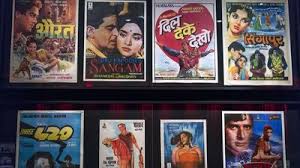Discover how Indian filmmakers transform Western suspense classics into unique cinematic experiences. Explore Bollywood’s take on thrillers and how they add cultural depth to global storytelling.
Hollywood has long been the dominant force in suspense thrillers, with films like Psycho (1960), The Silence of the Lambs (1991), and Gone Girl (2014) defining the genre. However, Indian cinema, particularly Bollywood, has a rich history of adapting and reinterpreting these classics to cater to local audiences. This reinvention often involves a fusion of cultural elements, musical interludes, and a deeper emotional connect. This article explores how Indian filmmakers have successfully adapted Western suspense films, adding their own flair and creativity.
The Art of Adaptation: Bollywood’s Take on Hollywood Thrillers
1. Cultural Reinterpretation of Classic Suspense Films
One of the most striking aspects of Bollywood adaptations is the way filmmakers modify the original narrative to align with Indian sensibilities. For instance:
- Kahaani (2012) bears similarities to Taking Lives (2004) but is deeply rooted in Kolkata’s culture, featuring the Durga Puja festival as a crucial backdrop.
- Murder (2004), inspired by Unfaithful (2002), integrates Bollywood’s signature romantic and emotional intensity to create a more relatable story for Indian audiences.
2. Blending Suspense with Bollywood’s Musical Aesthetic
Unlike Hollywood thrillers, which rely on atmospheric tension and minimalistic scores, Bollywood adaptations often incorporate song sequences. While purists argue that this disrupts the suspense, skilled directors use music to deepen emotional impact and foreshadow key plot twists. Examples include:
- Gupt (1997), inspired by The Usual Suspects (1995), which cleverly uses music to build suspense before its shocking climax.
- Ek Hasina Thi (2004), loosely based on Double Jeopardy (1999), features haunting background scores that enhance the thriller element without losing the Bollywood charm.
3. Character Depth and Emotional Weight
Indian thrillers often focus on family, relationships, and emotions more intensely than their Western counterparts. This is evident in movies like:
- Drishyam (2015), adapted from the Malayalam film Drishyam (2013), which shares thematic similarities with Gone Girl (2014) in terms of misdirection and psychological manipulation. The film’s emphasis on familial bonds sets it apart from the Western take on crime and punishment.
- Badla (2019), a remake of the Spanish film The Invisible Guest (2016), features Amitabh Bachchan in a role that adds layers of wisdom and gravitas, elevating the suspense with an Indian moralistic touch.
Bollywood vs. Hollywood: Key Differences in Suspense Storytelling
1. Pacing and Storytelling Approach
Hollywood thrillers often adopt a fast-paced, high-intensity approach to suspense. In contrast, Bollywood thrillers tend to be more layered and gradual in their buildup, allowing characters and emotions to develop fully. This difference is visible in:
- Talaash (2012), which slowly unravels a supernatural thriller, unlike its Western counterparts that would prioritize fast-paced psychological tension.
2. Morality and Ethical Undertones
Indian cinema often infuses suspense thrillers with ethical dilemmas and justice themes, reflecting cultural values. This is seen in:
- A Wednesday! (2008), which, while not directly based on a Hollywood film, shares thematic similarities with Phone Booth (2002) and John Q (2002), but with a strong moral commentary on terrorism.
3. Audience Expectation and Market Appeal
Western thrillers prioritize unpredictability and dark realism, whereas Bollywood thrillers maintain a balance between suspense, drama, and mass appeal.
- Race (2008), similar in theme to Gone in 60 Seconds (2000) and The Italian Job (2003), integrates stylish action with dramatic betrayals, making it more suitable for Indian audiences.
The process of reinventing suspense classics from West to East is more than just a remake; it’s a transformation that tailors stories to cultural contexts, emotional depth, and audience expectations. Indian filmmakers have mastered the art of taking Western suspense elements and infusing them with local flavors, making them more accessible and engaging for Indian audiences. As Bollywood continues to evolve, it will be exciting to see how filmmakers push the boundaries of suspense storytelling while staying true to their cultural roots.
FAQ
1. Are Bollywood thrillers just remakes of Hollywood films?
Not always. While some Bollywood thrillers are direct adaptations, many are inspired by global films but reinterpreted with unique narratives, characters, and cultural elements.
2. Why do Bollywood thrillers include songs?
Songs are an integral part of Indian cinema. In thrillers, they are often used to establish character emotions, build tension, or provide dramatic foreshadowing.
3. Which Bollywood thrillers are must-watch for suspense lovers?
Some highly recommended Bollywood suspense thrillers include Drishyam (2015), Kahaani (2012), Badla (2019), A Wednesday! (2008), and Ek Hasina Thi (2004).
4. Do Indian thrillers have international recognition?
Yes. Films like Andhadhun (2018) and Drishyam (2015) have received critical acclaim and international recognition, with remakes in multiple languages.
5. How do Indian thrillers differ from Western thrillers?
Indian thrillers tend to be more emotionally driven, incorporate music, and often have moral undertones, whereas Western thrillers focus more on realism, psychological tension, and fast-paced storytelling.
By understanding how Indian filmmakers reinvent suspense classics, audiences can appreciate the unique storytelling methods that Bollywood brings to the genre. Whether adapted or original, Bollywood thrillers continue to captivate with their blend of suspense, drama, and cultural richness.
